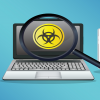Malware is the major threat in our online world. It has the potential of damaging your website or your business. How do you keep your website safe from such a threat? Using cWatch.comodo. The software is the most ideal solution for all sizes of business.
The sole purpose of creating malware is for malicious reasons. They are used to attack and infect the sites where they change their appearance. Once attacked, the culprit uses the website to promote their agenda. They replace what is already on the site with their content.
The attack will reduce traffic to your site as the visitors get offending messages. Sometimes, malware may prevent people from entirely accessing your website. All those challenges are preventable with webinspector. The malware scanner has emerged as a must-have for all website owners. From daily malware scans to prompt notifications, you now have a security guarantee for your website.
How Malware Attacks Your Site?
- They hide in advertisements.
Hackers sometimes inject a wicked code into an ad. Sometimes, they upload their bad ads to a network of advertisements, which circulates in millions of websites. The visitors to your site get an automatic infection when they click the ad or make downloads.
- Redirection
Sometimes the malware will execute redirection of visitors to other sites.
- Allows hackers to access your site.
Backdoor is a type of malware that allows hackers to gain access to your site. From there, they may reveal sensitive customer information and change the appearance of your site. Backdoor files are complex enough, and you might not be able to detect them.
- Spam content on your site.
You will realize the appearance of unique links or comments. A sudden decline in the traffic to your site indicates a search engine optimization span. Spam will ride on the techniques that assist websites to rank well in search results. Among them is getting backlinks and the use of essential search terms on a web page.
They will inject multiple files containing wicked backlinks and keywords that are not related to your site. Through the two, the hackers will lead to a decline in the search rankings of your website. As a result, your website gets less traffic.
The Consequences of Website Malware
- Website blacklisting by search engines
Search engines such as google analysis websites for malware and blacklist them. Sometimes, search engines will place an alert on the sites to cushion the visitors from malicious content. The warning will inform the visitors that the site is infected and prevents them from accessing. Other than causing traffic decline, visitors lose trust in your site.
- Damage reputation of your site
Your website will lose reputation, traffic, and revenue if affected by malware. Visitors will lose trust in your site and will never return. No one would return to a site where details are likely to be compromised. However, it is easy and affordable to prevent malware attacks.
How to Prevent a Malware Attack?
To cushion your website from malware attack, you will have to prevent the weak points in your website code. A malware test site will help determine to what extent the network security protects your website.
Vulnerability gives room for hackers to attack your site with the help of bots. You can prevent vulnerabilities through
- You need to ensure the prompt installation of updates and patches. For a content management system such as WordPress, it is crucial to update your plugins and software immediately when they are available. It helps in the rapid patching of the vulnerabilities.
- You need to make sure that you uninstall what you don’t need. The more features the site has, the higher it is vulnerable to attacks.
- The use of a website malware scanner will also help in detecting vulnerabilities. Besides, the use of an automated patching system on your site is critical to keep it updated.
Cybercriminals may bypass your antivirus software and other malware detection system. They hide in compressed files because they know that the antivirus is unable to analyze any file unless it is a ZIP. To check the effectiveness of your network security, you will need to use a malware test site.
How to Remove a Malware?
Once it is clear that your site has malicious software, you will need to block advertisements. You will have to make it offline to prevent further damage until you are sure that there is no malware. The initial step after detecting malicious software on your site is to carry out a check to see whether there could be others.
Some pages on your website will download and install bogus programs on the computer without your permission. Failure to use the recent security updates increases the vulnerability of your site to attacks. Once the cybercriminals gain access to your site, they alter the webpages. Their wicked codes get executions and will either display the spam links or redirect visitors to another website.
You will need to check if there are suspicious activities in your server logs. They could be wrong login attempts that result in an error, anonymous user accounts, execution of remote instructions, etc. Or use a malware test site to identify the malware.
You will need to examine the HTML source code of your webpage. At that point, you will be checking any dubious block of JavaScript code or links that lead to a platform hosting the malware. You will need to inspect for any recent modification and file uploads on your web server.
Most cybercriminals inject a redirect code instead of placing malware on the website. You will need to discard and redesign any pages that you suspect could be having malicious software.
Instead of using clear protocols such as telnet, you will need to use SFTP and SSH, which has encryption. Clear text protocols convey the user credentials in an unsafe manner that any person who accesses the network can read.
You need to use strong passwords and make sure you change them from time to time. It reduces the chances of culprits to access user accounts and cause a mess.
Carry out website configurations to forbid the user from linking directly to any executable file.
Conclusion
It is crucial to keep all the software that you use on your webserver updated. The recent versions have recent security patches. Besides, you will need to perform scans regularly using a website malware scanner. Scanning helps to detect any security vulnerabilities on your site. You can use a free website malware scanner.
Related Resources
Website Status
Website Malware Removal
DDoS Tools
How to DDoS
WordPress Malware Removal
What is Hashing
Free Web Hosting
Is This Website Safe








